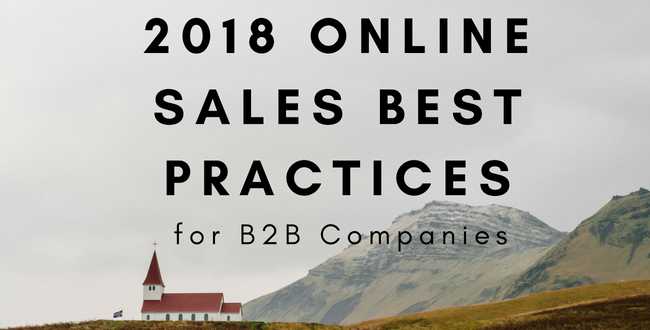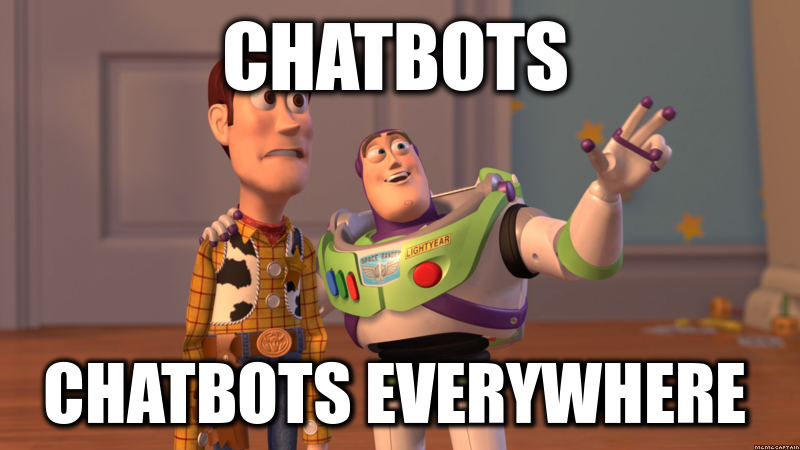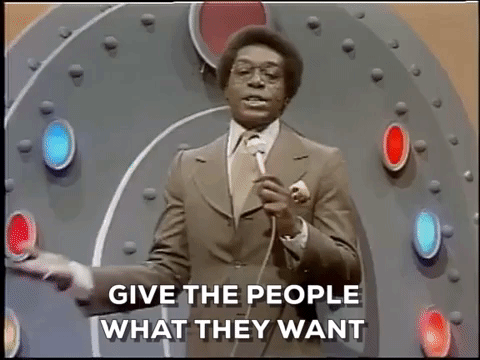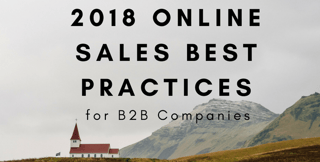
Working sales in the digital landscape is both invigorating and exhausting. If you navigate this space, you know what I mean.
Changing tactics, tools, such as conversational marketing and chat bots, and customer behaviors keep sales teams on their toes and in a constant state of change— that is, if they don't want to fall behind.
Because you're here, I want to commend you. Many sales teams we speak to have been stagnant in their ways and either don't or won't continuously improve and change their sales processes for the times. Since you're reading about new strategies and best practices to keep your sales experience relevant and up-to-date, you're already ahead of the curve.
Read on to find 4 online sales best practices to polish your sales enablement strategy for 2018:
1. Track Your lead response time
We really do live in an immediate gratification kind of world, don't we? If our web pages don't load within three seconds, we hit the back button. If our Amazon orders come a minute after the 48-hour mark, we're prepared to throw hands.
This kind of attitude has shifted to the way people engage online as well—and it is no exception for B2B companies.

Once upon a time, the inbound best practice looked something like this:
- Prospect fills out a form.
- Delay 3 days.
- Send automated email.
- Delay 4 days.
- Send automated email.
- Delay 3 days.
- Send automated email.
- Delay 3 days.
- Send automated email.
- Prospect possibly fills out a form.
- Qualification.
- Sales reaches out.
And if the process doesn't look like that, then maybe there is a landing page to talk to a sales rep or there's some form to book a time to view a demo. After which, the prospect waits for an email or call from sales.
This process could take anywhere between a few days and literal months. What sales team (or any person) has that kind of time?
Research has shown that, for B2B companies, the average time between the moment a lead comes through to the website and when they actually get contacted by sales is a whopping 42 hours—that's almost two whole days. AKA, for-freaking-ever.

When it comes to the likelihood of that lead closing, every minute matters. And I'm not just being dramatic.
In a Drift survey of 433 companies, they found that there is a 10x decrease in your odds of ever making contact with a lead after the first five minutes. Ergo, after just five minutes the odds of you closing really tanks.
So, how does your lead-response time stack up?
If you can't tell us that number, this is where you need to start. You can't improve a process if you don't know where you stand now.
Once you know that, you can find opportunities to shed that time off. And how? Read on.
2. Implement an online chat
I've pitched an online chat implementation strategy over a dozen times, and I hear the same push-backs every time:
- People will use it too often.
- We'll get too much spam.
- We don't have the time or energy to have to monitor every message.
- We don't want another tool to manage.
There seems to be this misconception about how online chats can work. It doesn't have to be this pain-in-the-ass thing that you need to monitor 24/7.
It does not have to work that way—nor should it.
But here are the facts:
- 51 percent of businesses are now driven by real conversations—goodbye, forms.
- 48 percent of conversations are now managed by bots—hello time-savers.
- Live chat is expected to grow by as much as 87 percent in the next 12-18 months.
- 51 percent of consumers say a business needs to be available 24/7.

If you're not using online chat on your website, you're quickly falling behind. Thankfully, there are a plethora of online chats you can leverage for a conversational marketing and sales strategy.
Here are a handful of the many ways an online chat can improve sales strategy and provide a better user experience.
- Qualify more leads with an interactive chatbot that asks only the important questions.
- Book more sales calls with your custom bot and calendar integration—all automated, of course.
- Have more conversations, whether you're using a chatbot or a live-chat function on your highest converting pages.
- Provide a better user experience by immediately answering your prospects questions.
3. Talk about pricing
The most common question a salesperson has for a prospect is, "What's your budget?"
And the most common question that literally any person ever has before they buy anything is, "How much does it cost?"
Yet, sales teams across the world are withholding pricing information until some of the final conversations.
I don't get it. The people want to know!
Here are myths about being upfront with your pricing
- It will scare people away.
- Your competitors will use that information against you.
- You will lose sales.
But that's all they are: myths.
As a busy salesperson, you don't have time to sell to prospects who are never going to afford your product. If you've ever told a seemingly hot lead about your pricing only to be met with sticker shock, you've only wasted all that time. Frankly, the people who will never afford your service or product shouldn't be engaging with you.
As far as your competitors, let me ask you this:
Do you already have some idea of what your competitors are charging? If the answer is yes, then your competitors already know the same about you. Moreso, are you selling to your competitors? Of course not—focus on what your potential customers want to know and less on what you're afraid your competitors might know or do.

4. Love your customers—then build a referral program
Word-of-mouth referrals make up to 20-50% of most purchasing decisions.
If your customers are not your advocates, you're leaving an enormous amount of potential on the table. While word-of-mouth marketing is one of the most powerful tools in sales, it still remains underused and misunderstood. Even companies that close business as a result of a referral are unsure how to leverage it, or even how it happened in the first place. But the value of a referal is every salesperson's dream. Here is a note from HubSpot:
"A customer referral is highly valuable because it doesn't cost you much -- if anything -- to acquire them. The exact value of a referral varies across different businesses, but it's roughly the lifetime value (LTV) of a typical customer, plus the typical cost of customer acquisition (CAC), which you can then use to acquire additional new customers."
But here's another kicker:
Having the best and happiest customers may not be enough to connect you to their networks.
We highly recommend that you build a referral program that not only wins you more deals, but also rewards your customers. After all, you love them! As for how that program will look, it really depends on what your business looks like and how you want to say thank you to your loyal customers who refer new business to you.
Choose an incentive that both delights and adds value for your clients if their referral closes with you. And, of course, don't forget the personalized thank you note or email.
Final Thoughts
If you take away just two things from this post, I hope you walk away with these:
- If you're not hoping to implement these new tactics and use within the next 60 days, you're going to fall behind again. This landscape changes too fast for you to go slow.
- Online chatbots are the greatest untapped potential this year—use one.
Your revenue goals are going to creep up faster than you think. Are you ready to start closing? Take these 2018 sales best practices and hit the ground running. And when you're ready to take your sales process to next levels, you can always chat with us to learn about next steps. Click the button below to get started.
